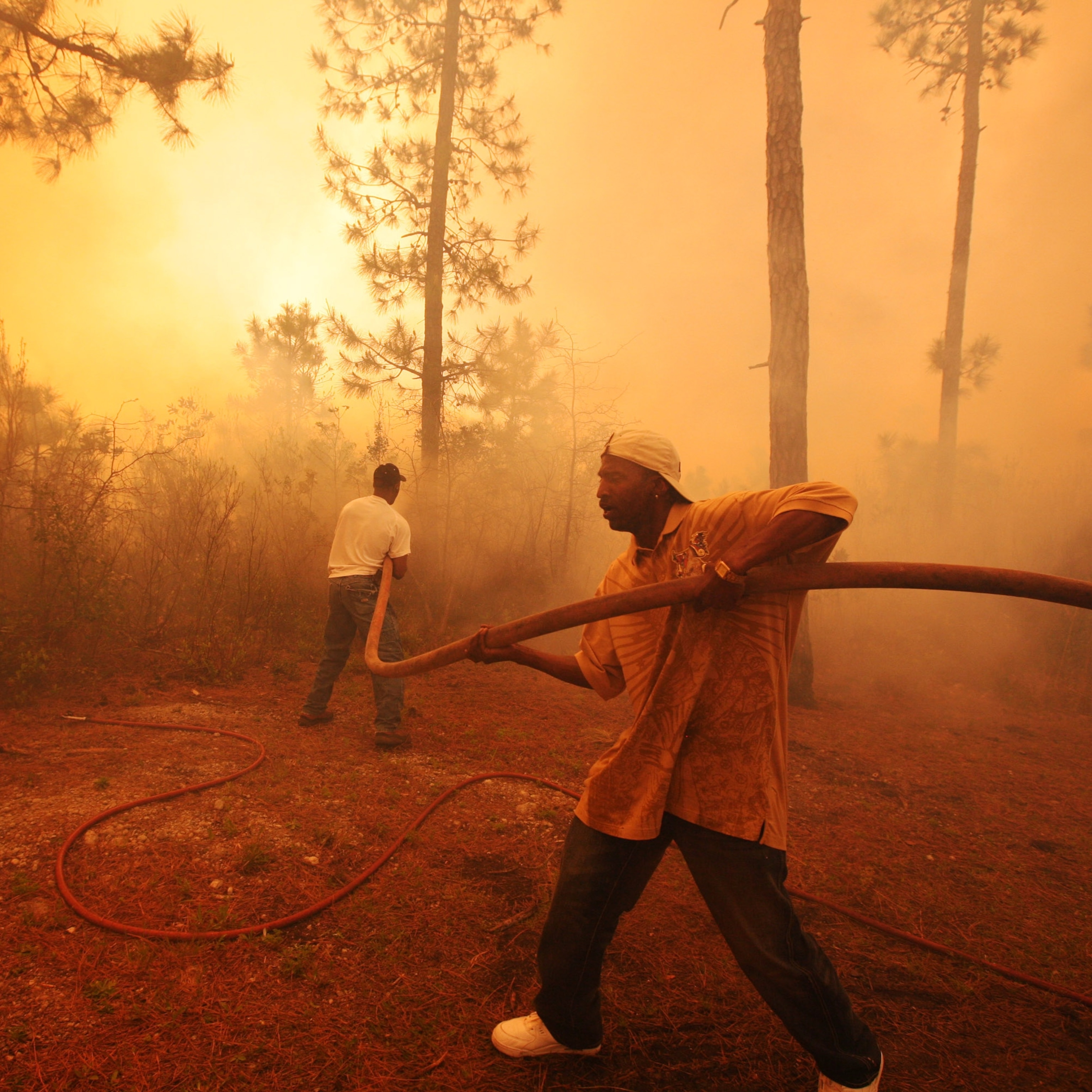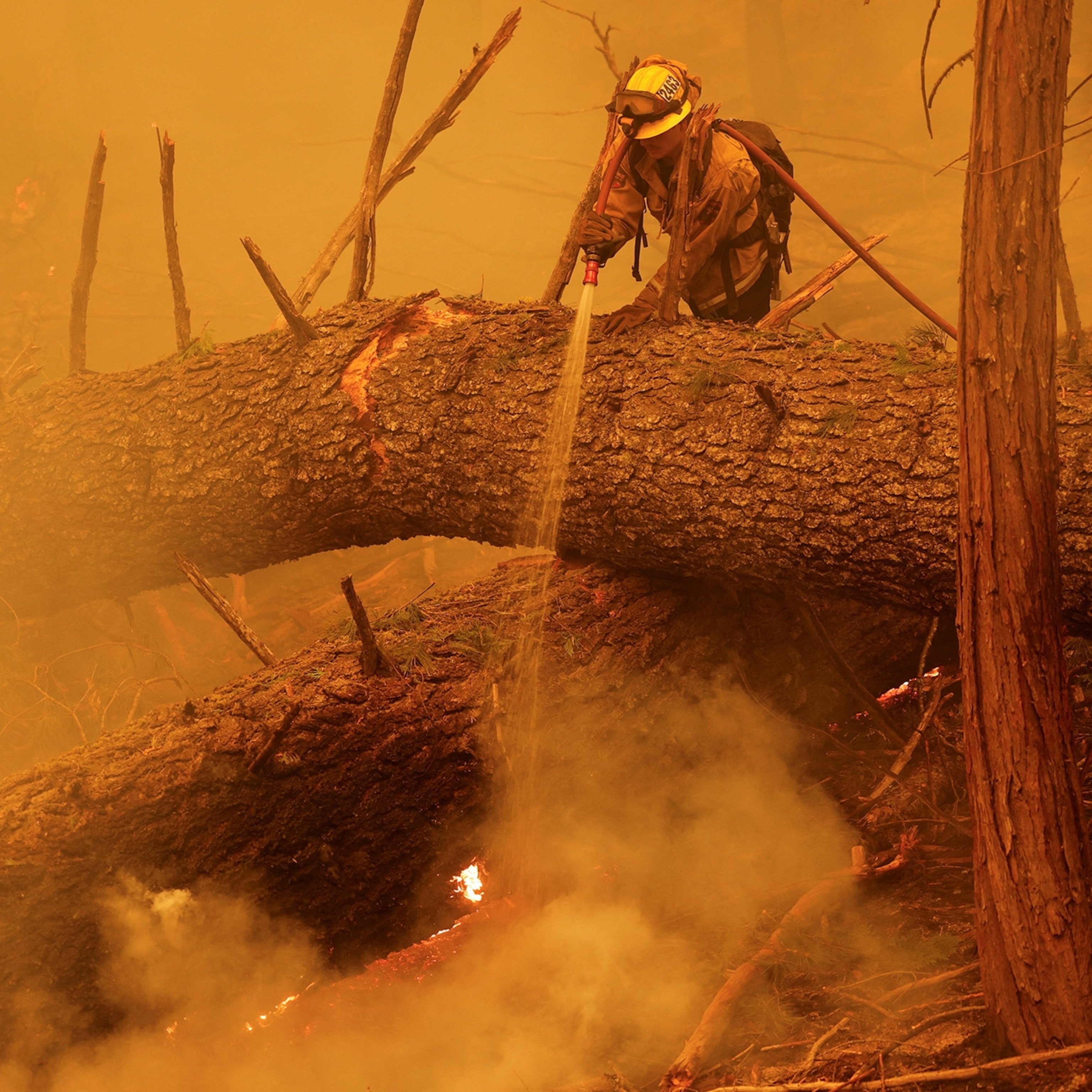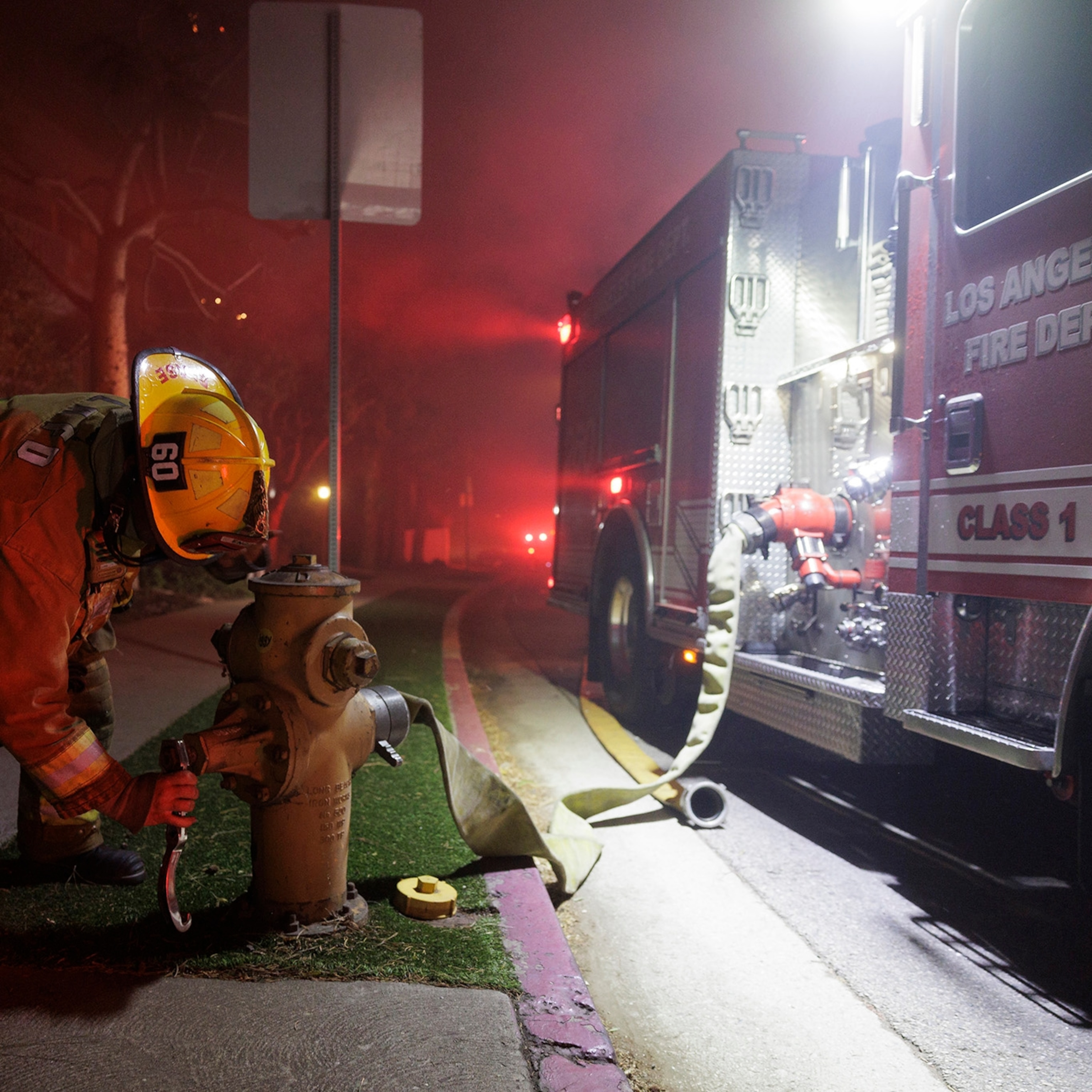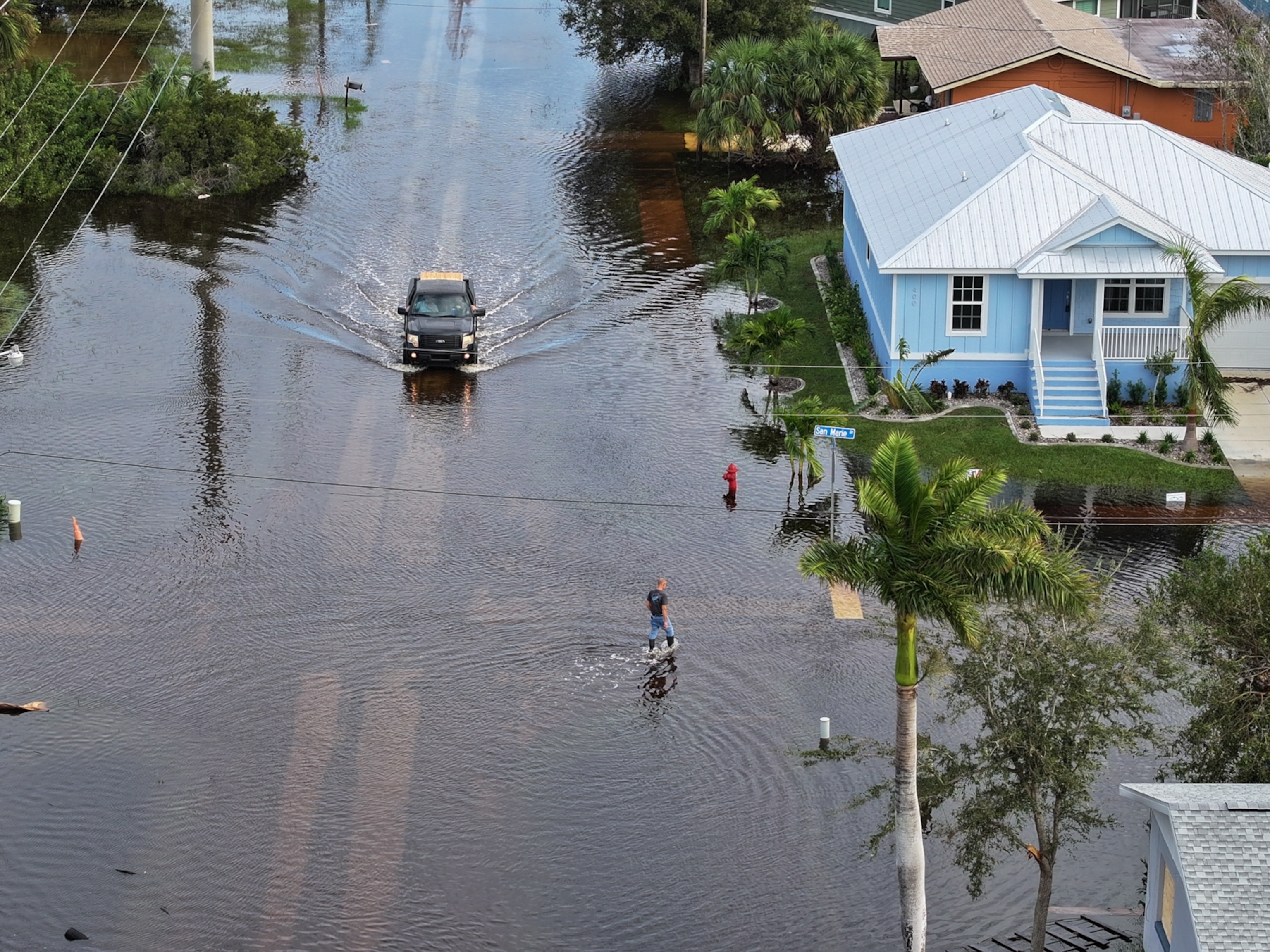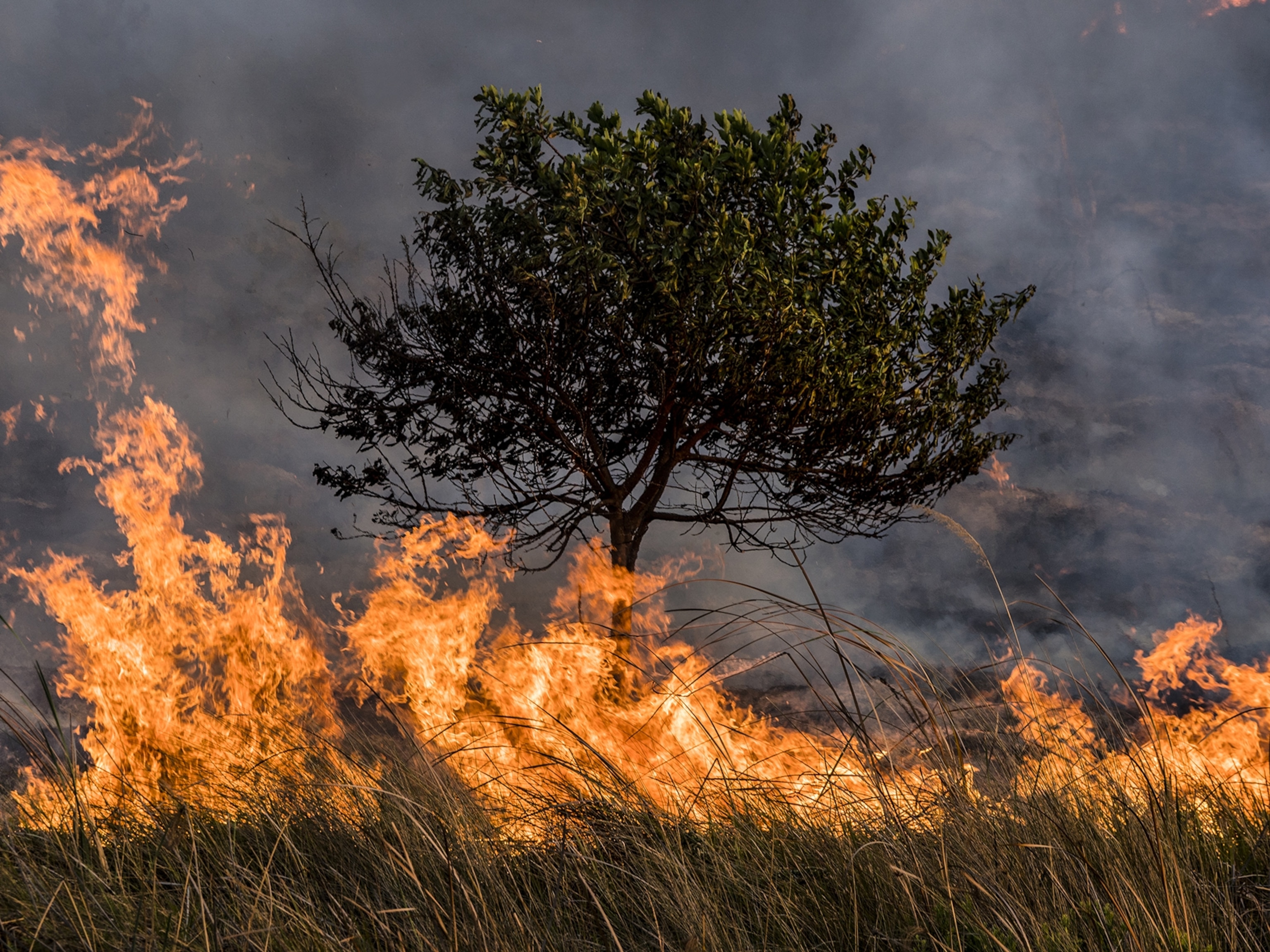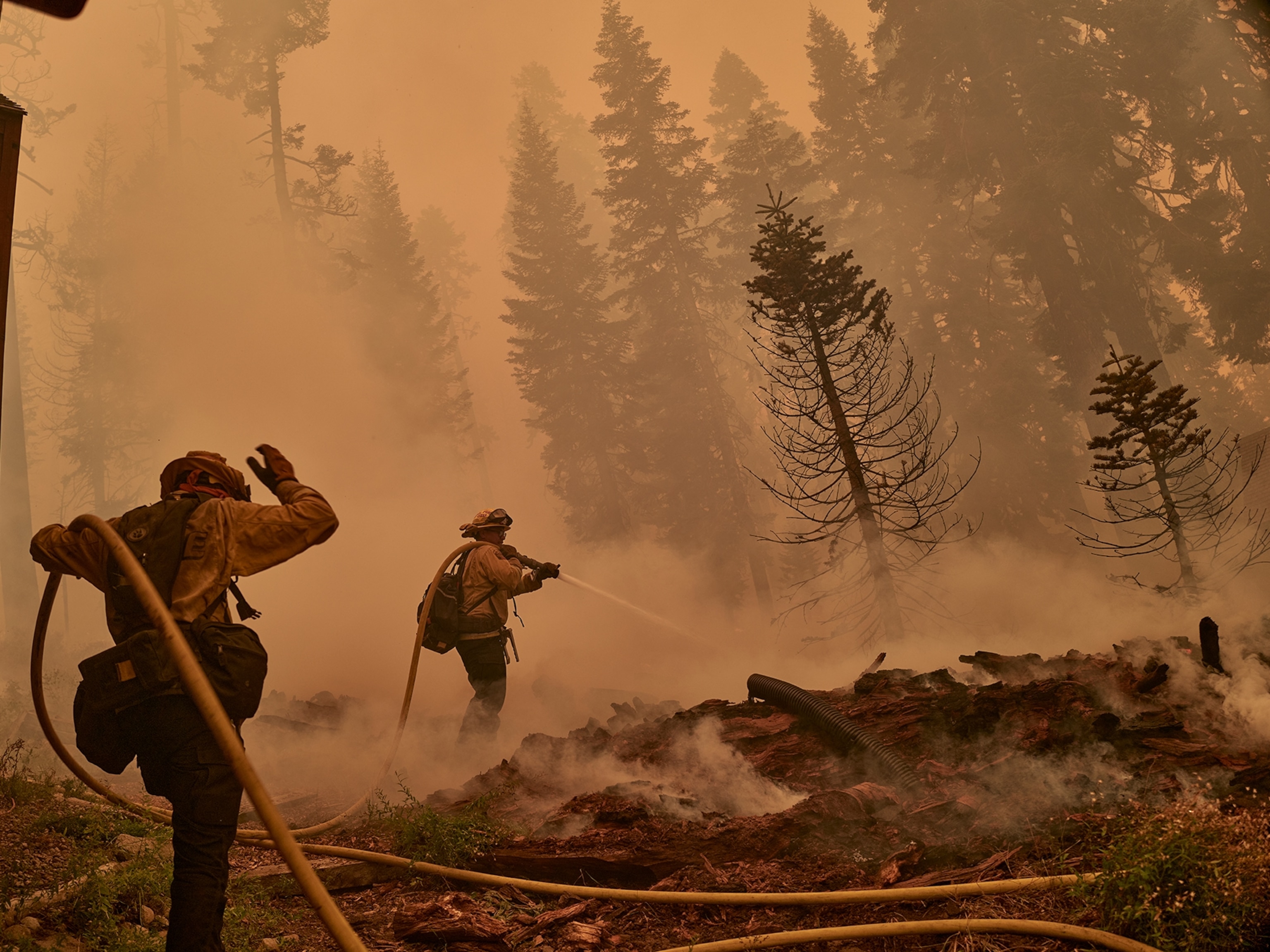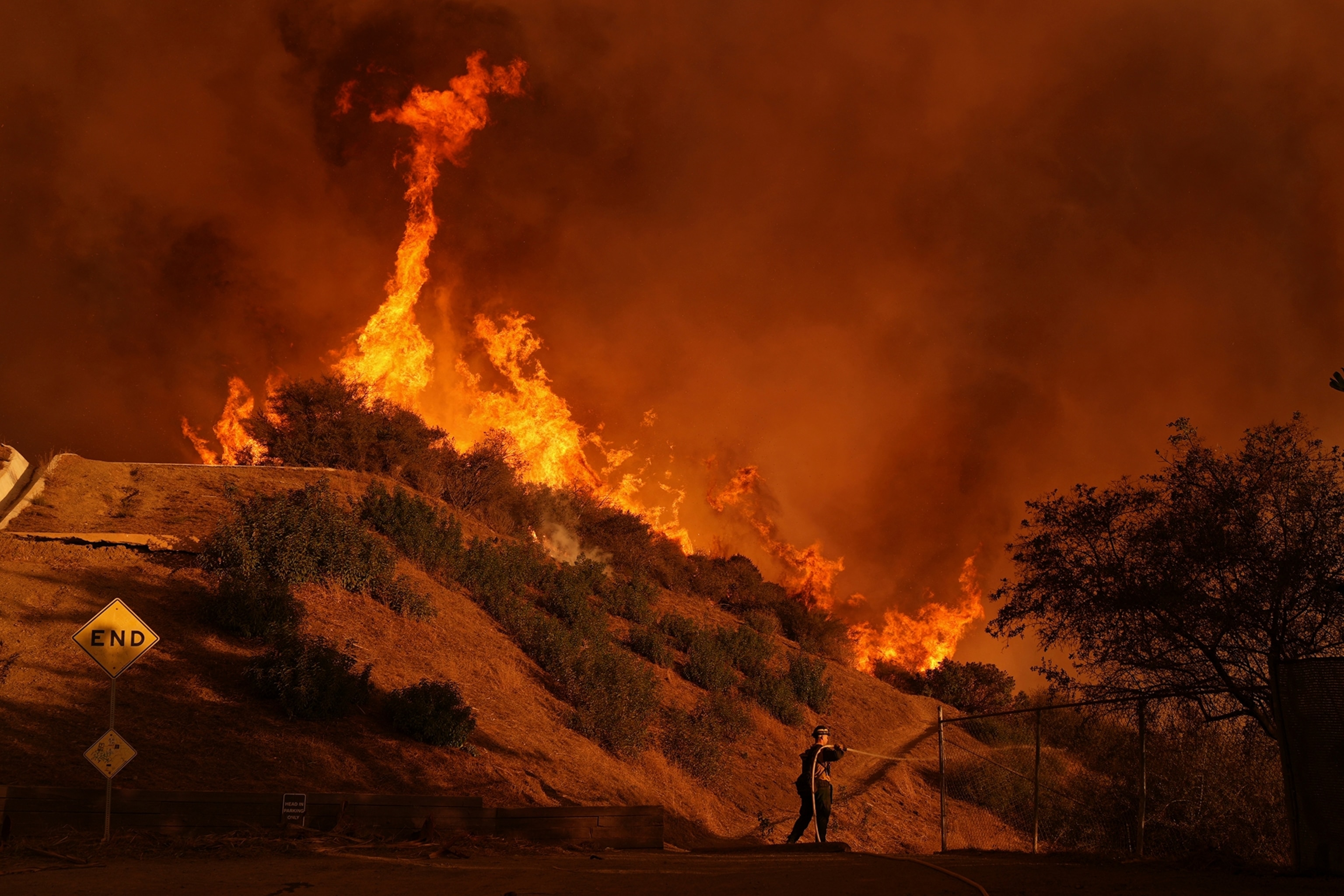
Climate change made the L.A. wildfires 35 percent more likely
A new report suggests that climate change-induced factors, like reduced rainfall, primed conditions for the Palisades and Eaton fires.
As the Palisades and Eaton wildfires still blaze in Los Angeles, exactly what kindled the fires remains a mystery. But one fact is clear: Climate change made the conditions that drove the devastating fires some 35 percent more likely than they would have been had the fires occurred before the Earth began warming in the industrial age.
Nearly three dozen researchers across the globe analyzed the impact of the burning of fossil fuels on this “natural” disaster, as part of the London-based nonprofit organization World Weather Attribution (WWA). The group posted their rapid analysis on its website today.
Together, the two fires have consumed more than 35,000 acres and killed more than two dozen people since they started in early January. Reduced rainfall, dried-out vegetation, and the overlap of these drought conditions with winter’s strong Santa Ana winds all aided their relentless march.
“All the pieces were in place for a wildfire disaster,” Park Williams, a hydroclimatologist at the University of California, Los Angeles, and a coauthor of the paper, said in a statement.
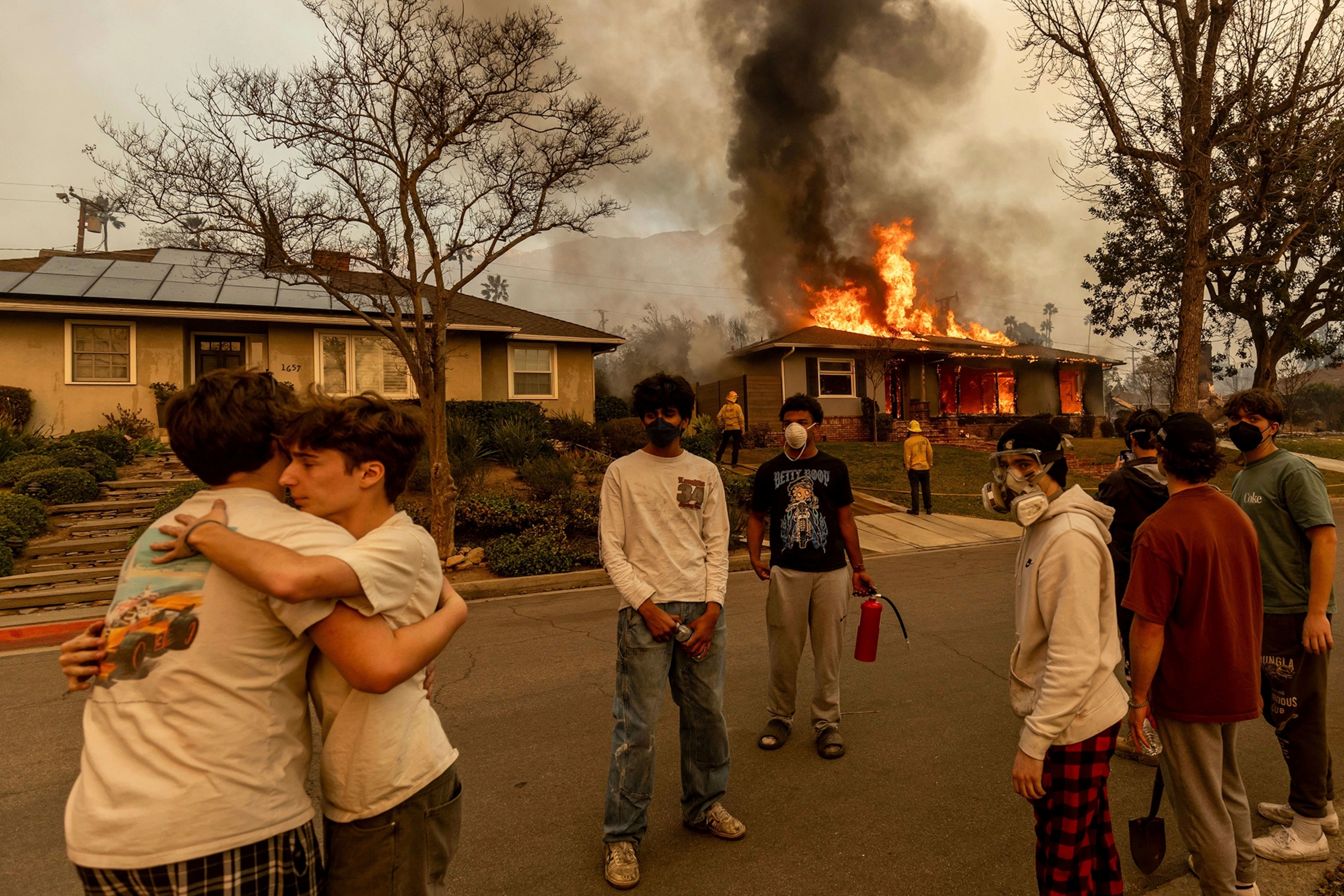
(See photos of the apocalyptic wildfires as they raged across L.A.)
Connecting the fires to climate
To determine the effect of climate change, the scientists assessed the area’s weather conditions leading up to the fire and compared those to conditions in a hypothetical world that had not experienced global warming. The analysis found that L.A.’s fire weather index—a measure that uses temperature, humidity, wind speed and precipitation to estimate fire risk—was higher than in a world without climate change. The analysis also found worsened drought conditions in recent months, which they calculated are now 2.4 times more likely than before the regular burning of fossil fuels.
While Southern California regularly experiences wildfires, “the impact of these fires and the timing of these fires in the core of what should be the wet season differentiate this event as an extreme outlier,” John Abatzouglou, a climatology researcher at the University of California, Merced, and another of the paper’s coauthors, said in a statement.
If global warming is not slowed, by 2100 such fire-inducing conditions in L.A. will be around 80 percent more likely than in preindustrial times, when the Earth’s climate was 1.3 degrees Celsius cooler, the WWA scientists found.
L.A. whiplashed from very wet to bone dry
With these California fires, the dry conditions resulted from barely any rain falling this rainy season, which starts in October and typically sees significant deluges December through February.
Although the WWA could not numerically assess climate’s impact on rainfall, the excessive rains pouring down on L.A. in the past two winters undoubtedly worsened the fire risk. The rain nearly doubled grass and brush above typical amounts, says Daniel Swain, a climate scientist at the University of California Agriculture and Natural Resources in Davis, who was not involved in the WWA research. That gave the fires an almost unlimited supply of the abundant but now-parched vegetation to burn.
Strong, seasonal Santa Ana winds also helped the fires spread across miles, into densely populated areas. The climate-induced drought means “we're extending fire season into the most potentially dangerous period, because we don't get these kinds of winds in the summer,” Swain says. In a recent review of some 200 climate papers, he and his coauthors dubbed such swings from excessive rain to drought as hydroclimate whiplash.
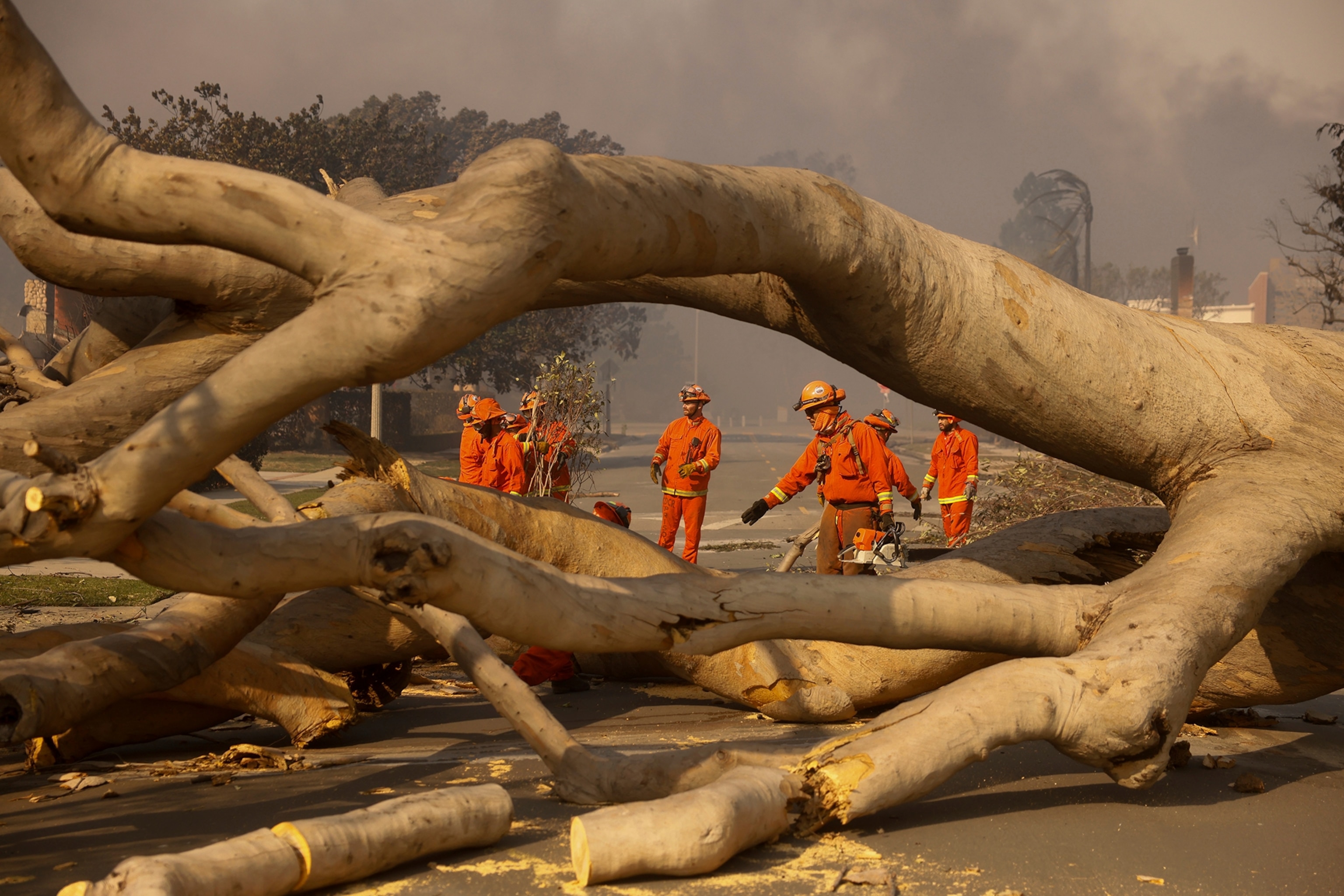
This whiplash occurs because, as the Earth increasingly warms, the sky can hold more water, akin to the way a supersized sponge is wetter than a typical kitchen version. This turbocharged “sponge” releases excess water, resulting in more intense rains (and in some cases, such as Hurricane Helene’s rains in western North Carolina last year, extreme floods). But during a drought, more water also evaporates, drying out vegetation even more than low-rainfall periods in centuries past.
“How much water is in plants in the soil is not just a function of precipitation, but also of how rapidly the atmosphere wants to extract that water back out,” Swain explains.
Calculations in Swain’s review reveal that globally, climate whiplash will roughly double in frequency compared to preindustrial levels if the world reaches 3-degrees Celsius of warming. “In many, if not most places in the world, this increasing hydroclimate whiplash will probably be a signature of a warming world,” Swain says.
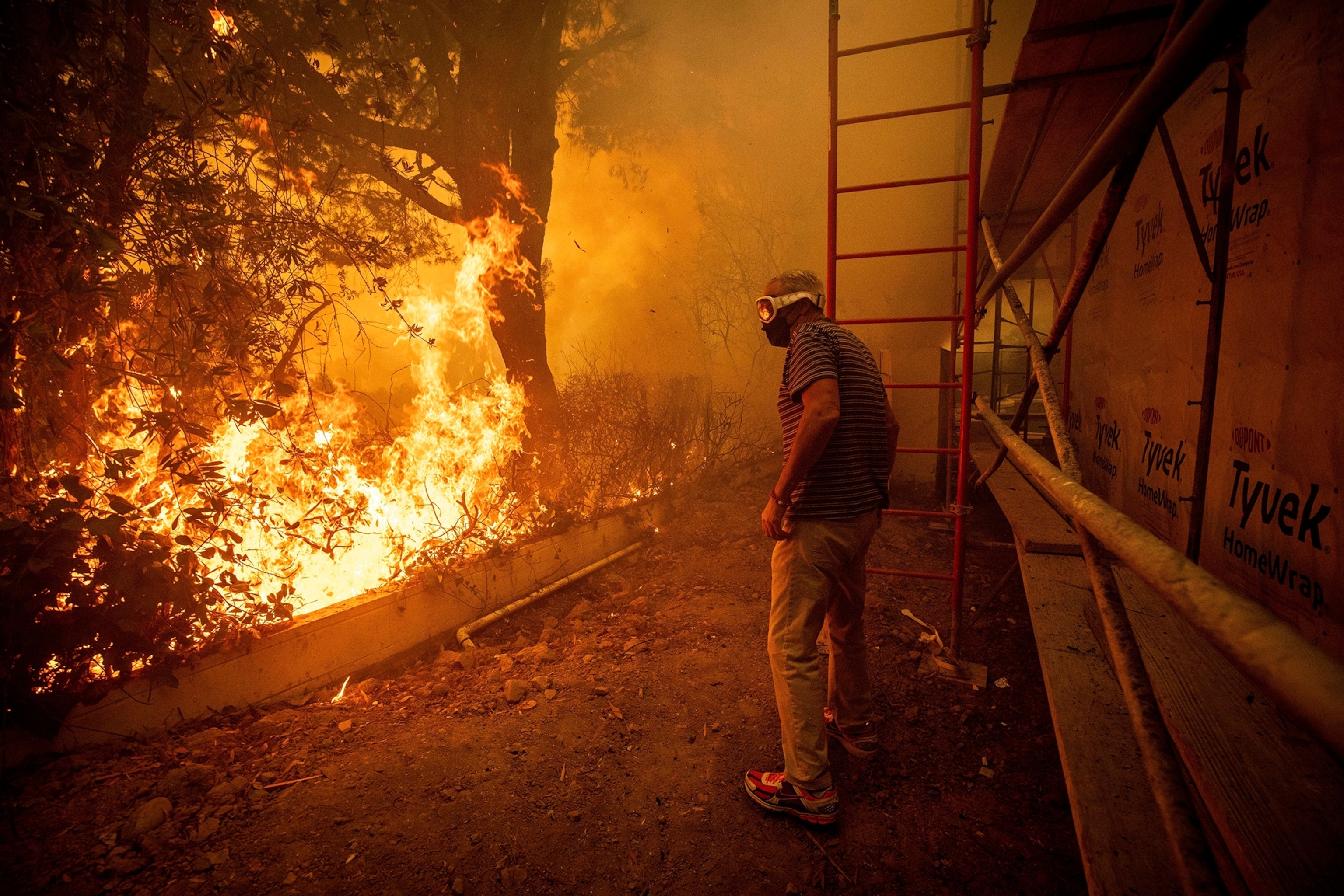

Dozens of weather events have been linked to climate change
Climate attribution science, a fledgling field a few decades ago, has greatly matured in recent years. To date, WWA has evaluated climate-change’s impact on some 90 extreme weather events, including other wildfires.
In 2019, the group determined that major wildfires in southern China in 2019 were more than seven times more likely to have occurred because of climate change. Meanwhile, fires in New South Wales that same year were made 30 percent more likely. And a massive wildfire in June 2024 in the tropical wetlands between Bolivia and Paraguay in South American—destroying the traditional lands of indigenous communities along with numerous wildlife—were 40 percent more intense than they otherwise would have been.
(The link between extreme weather and climate change has never been more clear.)
Other weather events studied by WWA as well as Climate Central, a nonprofit in Princeton, New Jersey, and others, have assessed droughts, unrelenting heatwaves, floods, storms, and wildfires.
“Extreme event attribution analyses serve two important purposes,” says Michael Wehner, a senior scientist at the Lawrence Berkeley National Laboratory in California, who has done calculations for past weather events. “First, they inform the public and policymakers about the influence of climate change on specific and often damaging extreme weather events. Second, they help climate scientists better understand this often- complex influence, leading to better projections of future climate change.”
Examining 26 extreme events in 2024, the WWA found that climate change contributed to the deaths of more than 3,700 people globally and forced millions from their homes. “As the planet warms, the influence of climate change increasingly overrides other natural phenomena affecting the weather,” the authors wrote.
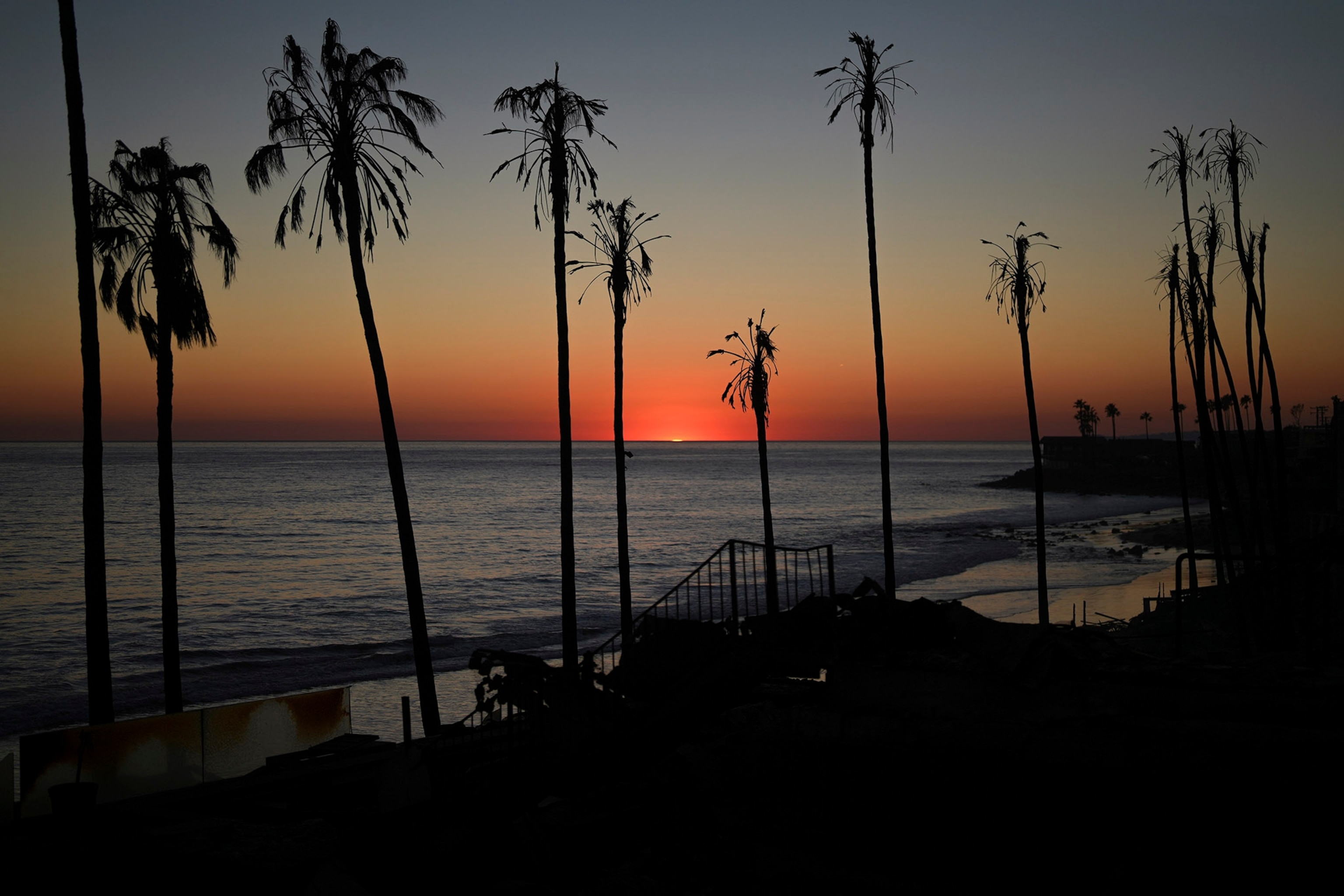
In the past month, homes, historic communities and cultural landmarks have been lost over vast swaths of charred terrain in the Palisades and Eaton fires.
“Communities can’t build back the same,” Williams noted in a statement, “because it will only be a matter of years before these burned areas are vegetated again and a high potential for fast-moving fire returns to these landscapes.”

